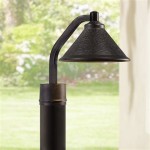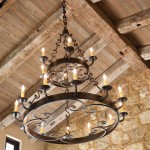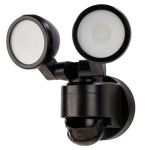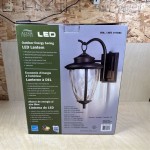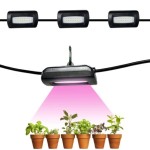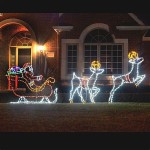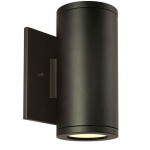Outdoor Lights Designed for Coastal Environments
Coastal environments present unique challenges for outdoor lighting fixtures. The combination of salt air, humidity, and intense sunlight necessitates the selection of lighting solutions specifically engineered to withstand these harsh conditions. Choosing appropriate outdoor lights for coastal locations is crucial not only for aesthetics and safety but also for ensuring longevity and minimizing maintenance costs.
Standard outdoor lighting fixtures, typically designed for inland climates, often corrode rapidly in coastal regions. This corrosion can lead to premature failure, compromised performance, and potentially hazardous situations. Therefore, understanding the specific demands of coastal environments and selecting fixtures built to meet those demands is paramount.
Understanding the Challenges of Coastal Environments
Several factors contribute to the accelerated degradation of outdoor lighting fixtures in coastal areas. The primary culprit is salt spray, which deposits chlorides on the surfaces of the fixtures. These chlorides are highly corrosive, especially in the presence of moisture. Humidity, a common characteristic of coastal climates, exacerbates this corrosion process. The constant exposure to moisture allows the chlorides to penetrate protective coatings and attack the underlying metal. Furthermore, intense sunlight, particularly ultraviolet (UV) radiation, can degrade plastic components and fade finishes, diminishing the aesthetic appeal and structural integrity of the lighting.
Wind is another significant factor. Coastal areas are often subject to strong winds, which can put stress on lighting fixtures and their mounting hardware. The wind can also carry abrasive sand particles, further contributing to the erosion of surfaces. In addition, coastal areas are prone to storms, including hurricanes and tropical storms, which can cause significant damage to poorly secured or inadequately protected lighting fixtures.
The proximity to the ocean also influences the type of flora and fauna present. Some coastal plants can be invasive and may damage lighting fixtures or obscure their light output. Similarly, birds and other animals can nest in or around lighting fixtures, causing damage and reducing their effectiveness. These biological factors must also be considered when selecting and installing outdoor lighting in coastal areas.
Key Features of Coastal-Grade Outdoor Lighting
To withstand the harsh conditions of coastal environments, outdoor lighting fixtures must possess specific features designed to protect them from corrosion, UV damage, and other environmental stressors. The materials used in construction are of paramount importance. Fixtures should be crafted from corrosion-resistant materials such as marine-grade aluminum, stainless steel (specifically 316 stainless steel), or composite materials. Marine-grade aluminum is treated with a protective coating to prevent oxidation, while 316 stainless steel contains molybdenum, which enhances its resistance to chloride corrosion. Composite materials are inherently resistant to corrosion and UV degradation, making them an excellent choice for coastal applications.
The finish applied to the lighting fixture is also critical. Powder coating is a durable and long-lasting finish that provides excellent protection against corrosion and UV damage. The powder coating should be applied in multiple layers to ensure thorough coverage and maximum protection. Wet painting, while less durable than powder coating, can also be effective if applied correctly with high-quality marine-grade paints.
Sealing is essential to prevent moisture from entering the fixture and corroding internal components. Lighting fixtures should be sealed with high-quality gaskets and O-rings to create a watertight enclosure. The sealing should be tested to ensure that it meets industry standards for water resistance. The International Protection (IP) rating system provides a standardized way to assess the level of protection offered by an enclosure against solid objects and liquids. For coastal applications, an IP rating of IP65 or higher is recommended, indicating that the fixture is protected against dust and water projected from a nozzle.
Hardware used to mount and secure the lighting fixtures should also be made from corrosion-resistant materials. Stainless steel screws, bolts, and anchors are essential to prevent corrosion and ensure that the fixtures remain securely in place, even in high winds. The mounting hardware should be properly installed to prevent water from penetrating the mounting surface and causing damage.
Selecting and Installing Coastal Outdoor Lighting
When selecting outdoor lighting for coastal locations, it's essential to consider the specific needs of the application. Factors such as the desired light output, the area to be illuminated, and the aesthetic style should all be taken into account. It's also important to choose fixtures that are energy-efficient and environmentally friendly. LED lighting is an excellent option for coastal applications, as it is energy-efficient, long-lasting, and produces minimal heat. LED fixtures are also available in a wide range of styles and colors, allowing for customization to match the architectural style of the property.
Proper installation is crucial to ensuring the longevity and performance of coastal outdoor lighting. A qualified electrician should be hired to install the fixtures according to local building codes and manufacturer's instructions. The electrician should be experienced in working with coastal lighting and should be knowledgeable about the specific challenges of coastal environments. The wiring should be properly protected from moisture and corrosion, and the fixtures should be securely mounted to prevent them from being damaged by wind or storms.
Regular maintenance is essential to keep coastal outdoor lighting in good condition. The fixtures should be inspected regularly for signs of corrosion, damage, or wear. Any corrosion should be promptly addressed by cleaning the affected area and applying a protective coating. The fixtures should also be cleaned regularly to remove salt buildup and other debris. The lenses or diffusers should be cleaned with a mild detergent and water to maintain optimal light output. Damaged or worn components should be replaced promptly to prevent further damage and ensure that the lighting continues to function properly.
Landscape design also plays a role in protecting outdoor lighting in coastal areas. Strategically planting trees and shrubs can help to shield the fixtures from wind and salt spray. However, it's important to choose plants that are salt-tolerant and will not damage the fixtures. Regular pruning is necessary to prevent plants from obscuring the light output or interfering with the fixtures.
Furthermore, consider the impact of light pollution on the coastal environment. Minimizing light trespass can help protect nocturnal wildlife and preserve the natural beauty of the night sky. Using shielded fixtures that direct light downward can reduce light pollution and improve the overall quality of the outdoor lighting. Consider using lighting controls, such as timers and motion sensors, to further reduce energy consumption and minimize light pollution.
Coastal environments demand a specific approach to outdoor lighting. By understanding the challenges posed by salt air, humidity, and intense sunlight, and by selecting fixtures designed to withstand these conditions, property owners can ensure the longevity, performance, and aesthetic appeal of their outdoor lighting. Investing in high-quality coastal-grade lighting is a worthwhile investment that will pay off in the long run through reduced maintenance costs, improved safety, and enhanced enjoyment of outdoor spaces.

Outdoor Lighting Coastal Locations Wall Lights In Brass

Outdoor Lighting Coastal Locations Wall Lights In Brass

Beach Style Lighting Outdoor Light Made Of Brass

Coastal Lighting With Marine Grade Finishes Flip The Switch

Outdoor Lighting For Coastal Locations

Outdoor Lighting Coastal Locations Wall Lights In Brass

How To Choose Coastal Outdoor Lighting Fixtures Rc

Beach Style Lighting Outdoor Light Made Of Brass

Markham 10 1 2 Textured Black Outdoor Coastal Wall Lights Set Of 63m63 Lamps Plus

Volume Lighting 1 Light White Polycarbonate Outdoor Nautical Wall Lantern Sconce Mount V9725 6 The Home Depot
Related Posts
